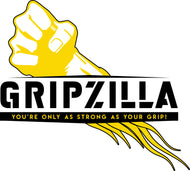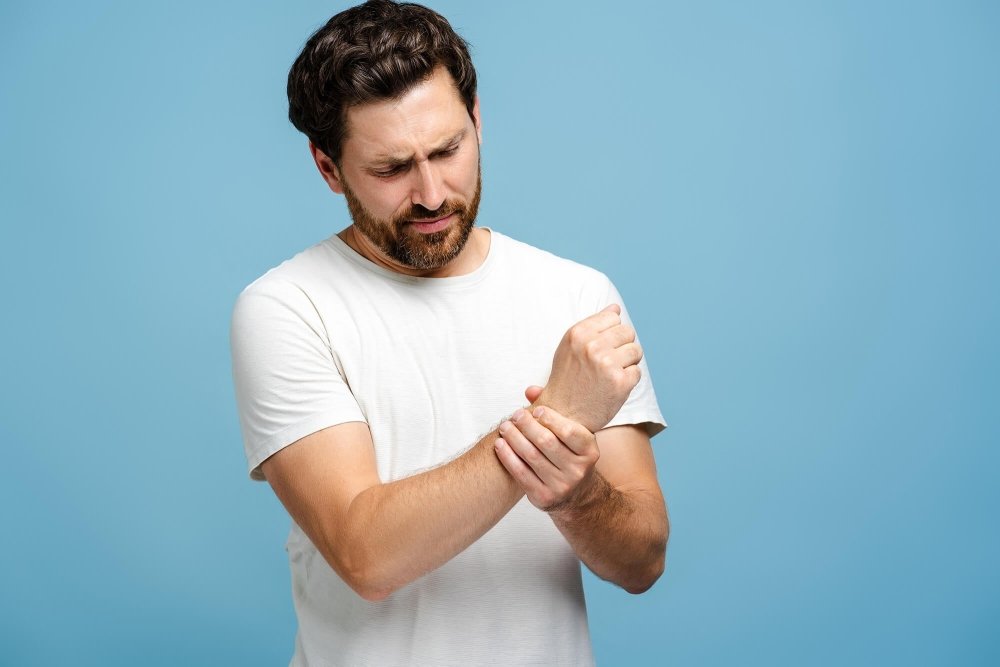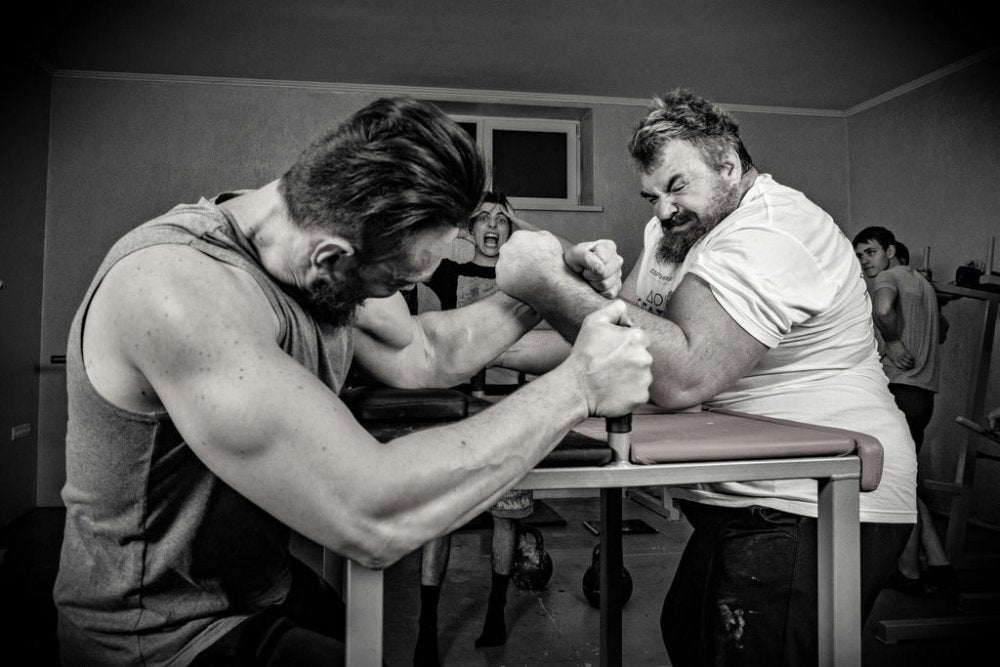Forearm pain is common among gym-goers, office workers, and even gamers. You use your forearm muscles for almost everything, gripping, typing, lifting, and carrying.
So, when pain strikes, it can disrupt your daily routine. The good news is that most types of forearm pain are easy to treat with rest, simple exercises, and a bit of care.
Let’s explore what causes forearm pain, how to recognize it, and what you can do to relieve it.
What Is Forearm Pain?
 Forearm pain refers to any discomfort, tightness, or soreness between the elbow and the wrist.
Forearm pain refers to any discomfort, tightness, or soreness between the elbow and the wrist.
It can feel dull, sharp, or burning depending on the cause. The pain may appear when you grip something, lift weights, or even rest your arm after overuse.
Forearm muscle pain often happens when your muscles, tendons, or nerves are strained or irritated from repetitive activity.
Common Causes of Forearm Pain
 Unsure of what might be causing pain in your forearm? Here are some possible reasons:
Unsure of what might be causing pain in your forearm? Here are some possible reasons:
1. Overuse and Repetitive Strain
Repetitive actions like typing, lifting, or gripping tools can cause tiny tears in the muscle fibers. This leads to soreness and stiffness known as overuse injury or repetitive strain injury.
People who train frequently at the gym often feel pain in the forearm after arm workouts or heavy lifting.
2. Tendonitis and Forearm Strain
Forearm tendon pain often comes from tendonitis, the inflammation of the tendons that connect muscles to bones.
The two common types are tennis elbow (pain outside the forearm) and golfer’s elbow (pain inside the forearm). These happen from repeated gripping or twisting of the wrist.
3. Muscle Strain or Minor Forearm Injury
A sudden pull or awkward movement can cause a muscle strain or sprain. This might happen while lifting heavy objects or during exercise.
The area may swell or bruise, and the pain can get worse when you move your wrist or elbow.
4. Nerve Compression
Sometimes a pinched nerve in your forearm or wrist can cause pain, tingling, or numbness. Carpal tunnel syndrome is one example that can make your forearm ache and your hand feel weak.
5. Poor Posture and Positioning
Sitting with poor wrist posture while typing or keeping your arms in one position for too long can cause mild but lasting forearm discomfort. The muscles tighten over time, leading to chronic soreness.
6. Inflammation or Medical Conditions
Arthritis or infection can also cause swelling and pain in the forearm. These conditions are less common but may require medical treatment.
Symptoms of Forearm Pain
The symptoms of forearm pain vary depending on the cause, but common ones include:
- Dull aching or burning pain between the wrist and elbow
- Pain in forearm when gripping, lifting, or rotating the wrist
- Swelling, tenderness, or stiffness
- Tingling or numbness in fingers or hands
- Weakness or fatigue in forearm muscles
If the pain lasts for more than a few days or worsens with activity, it’s best to address it early to avoid further strain.
Types of Forearm Pain
 Here’s a list of forearm pain types:
Here’s a list of forearm pain types:
Inner Forearm Pain
Inner forearm pain is often related to golfer’s elbow or flexor tendon irritation. It may hurt when you bend your wrist or grip tightly.
Outer Forearm Pain
Outer forearm pain is common with tennis elbow or extensor tendon strain. It usually worsens when lifting or turning your wrist.
Pain Near the Wrist
Pain near the wrist can result from repetitive wrist movements or nerve compression. Many people feel it after long typing sessions or lifting weights.
Pain Near the Elbow
Pain close to the elbow may point to tendonitis or joint strain. It can radiate down the forearm during motion.
How to Relieve Forearm Pain at Home
 You can treat most mild forearm pain at home with rest and simple self-care. These tips can help you relieve pain in the forearm and prevent it from returning.
You can treat most mild forearm pain at home with rest and simple self-care. These tips can help you relieve pain in the forearm and prevent it from returning.
1. Rest and Recovery
Take a break from activities that cause pain. Give your forearm muscles time to heal. Avoid heavy lifting and repetitive wrist motions until the soreness reduces.
2. Ice Therapy
Apply an ice pack for 15 to 20 minutes several times a day to reduce swelling and numb the pain. Always wrap the ice in a cloth to avoid direct contact with skin.
3. Gentle Stretching and Massage
Slowly stretch your forearm muscles to improve flexibility. Light massage helps increase blood flow and ease stiffness, especially after workouts.
4. Strengthening with Grip Tools
Once the pain begins to fade, light grip exercises can help rebuild strength.
Products like the Gripzilla Tornado, Gripzilla Hand Grippers, and the Oldschool Rubber Grip Training Rings are excellent tools for this.
These simple devices help strengthen the forearm, wrist, and hand muscles gradually. Using hand grippers or grip rings a few times a week can improve endurance, restore mobility, and reduce the risk of future forearm injury. They also promote better grip control, which supports overall forearm health.
These tools are not just for athletes. Office workers, climbers, and everyday users can benefit from them too. A few minutes of grip training daily can make a big difference in forearm strength and comfort.
5. Use Compression or Support
A compression sleeve can help reduce swelling and support the muscles while they recover. It also helps with circulation during rest or light activity.
6. Pain Relief and Posture Fix
Over-the-counter pain relief and improving your posture can help ease ongoing discomfort. Keep your wrists straight while typing or lifting to reduce unnecessary strain.
When to See a Doctor for Forearm Pain
You should contact a doctor if:
- The pain lasts more than a week despite rest and care
- There is swelling, bruising, or visible deformity
- You feel tingling or numbness in your fingers
- You cannot grip or move your arm normally
- The pain follows an injury or fall
A doctor may recommend physical therapy, imaging tests, or specific treatments depending on the cause.
Preventing Forearm Pain
Preventing pain in the forearm starts with balance and care:
- Warm up before workouts or repetitive tasks
- Stretch your arms daily to keep muscles flexible
- Maintain good wrist posture during typing or lifting
- Avoid over-gripping tools or equipment
- Use ergonomic grips and take regular breaks
Small habits like these can protect your forearm from unnecessary strain and keep your muscles healthy.
Keep Your Forearms Strong and Pain-Free
Forearm pain can slow you down, but it doesn’t have to last. With the right care, stretching, and strength training, your arms can recover and feel stronger than before.
If you want to strengthen your grip and support your recovery, explore Gripzilla’s collection of grip training tools.
From the Tornado series to the Hand Grippers and Oldschool Rubber Grip Rings, each product is designed to help improve forearm strength safely and effectively.
Regular use can boost your grip power, prevent muscle fatigue, and keep your forearms pain-free for the long run.
Take care of your forearms today, they’re the foundation of your everyday strength.



